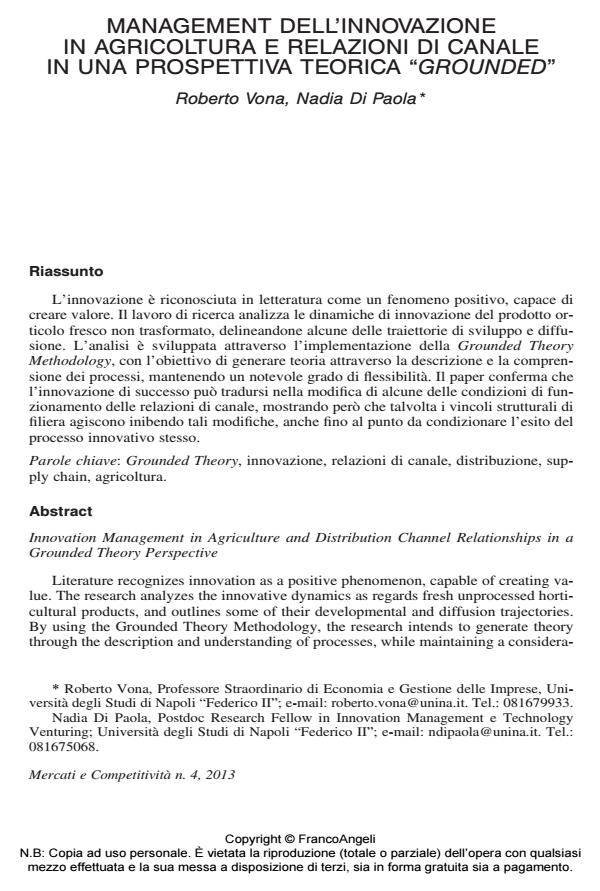Innovation Management in Agriculture and Distribution Channel Relationships in a Grounded Theory Perspective
Journal title MERCATI E COMPETITIVITÀ
Author/s Roberto Vona, Nadia Di Paola
Publishing Year 2013 Issue 2013/4
Language Italian Pages 20 P. 83-102 File size 679 KB
DOI 10.3280/MC2013-004005
DOI is like a bar code for intellectual property: to have more infomation
click here
Below, you can see the article first page
If you want to buy this article in PDF format, you can do it, following the instructions to buy download credits

FrancoAngeli is member of Publishers International Linking Association, Inc (PILA), a not-for-profit association which run the CrossRef service enabling links to and from online scholarly content.
Literature recognizes innovation as a positive phenomenon, capable of creating value. The research analyzes the innovative dynamics as regards fresh unprocessed horticultural products, and outlines some of their developmental and diffusion trajectories. By using the Grounded Theory Methodology, the research intends to generate theory through the description and understanding of processes, while maintaining a considera- ble degree of flexibility. The paper shows that innovation may change some of the distribution channel orders, but that the structural constraints of the supply chain in certain circumstances may act by inhibiting these changes, sometimes to the point of influencing the outcome of the innovation process.
Keywords: Grounded Theory, innovation, channel relationships, retail, supply chain, agriculture.
- Can snacking be healthy? A comparison between coeliacs and health conscious food consumers Rebecca Pera, Giampaolo Viglia, in MERCATI & COMPETITIVITÀ 3/2017 pp.79
DOI: 10.3280/MC2017-003006
Roberto Vona, Nadia Di Paola, Management dell’innovazione in agricoltura e relazioni di canale in una prospettiva teorica "grounded" in "MERCATI E COMPETITIVITÀ" 4/2013, pp 83-102, DOI: 10.3280/MC2013-004005